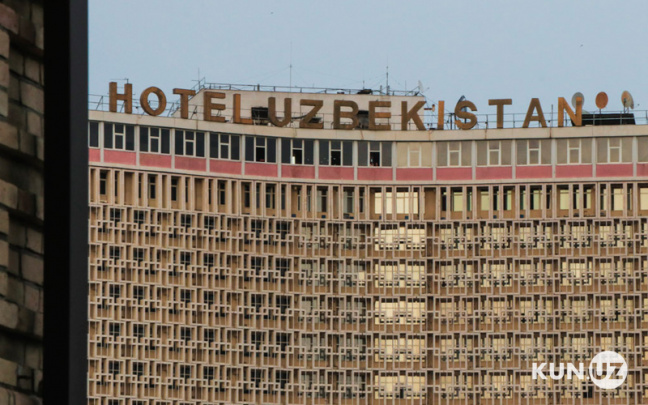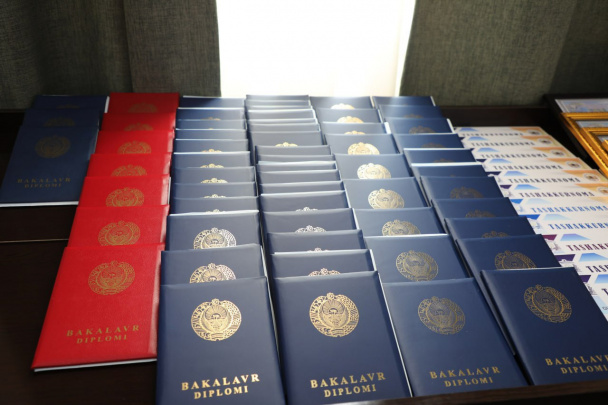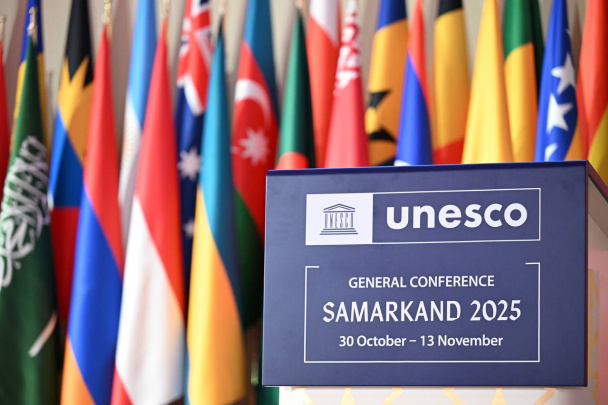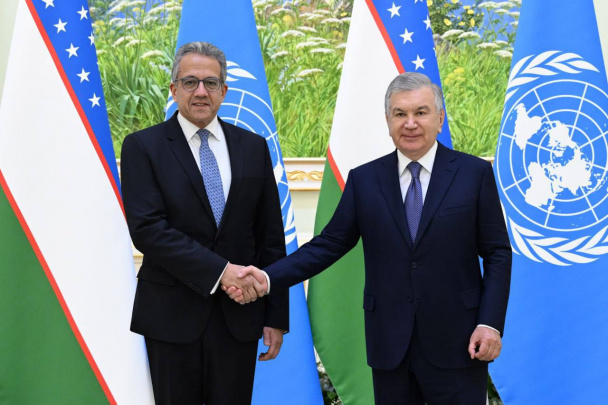Why did Uzbek officials lapse into silence at the UNESCO session?

Baku is hosting the 43rd session of the UNESCO World Heritage Committee. For Uzbekistan, this event is important for many reasons: today we have become a real, effective part of the global cultural landscape and public efforts to preserve cultural heritage are understood and supported, Yuriy Chernogayev writes.
In addition to respect for the country, it brings significant benefits in tourism and other sectors of the economy. But, only when we are honest and open. Those documents that Uzbek officials brought to Baku, make you think that this is not always the case.
Shakhrisabz, Bukhara and Samarkand were on the agenda of the UNESCO WHC’s 43rd session along with other sites of the Asia-Pacific region. These three cities are the history of civilization. Their safety is the concern of all mankind.
This is exactly what 3,000 experts from 180 countries were going to demonstrate in Baku. The delegation of Uzbekistan, consisting of solid figures, brought to the session reports on all three sites. All documents – good sample of high skill. Obviously, there was complete confidence that this wonderful paperwork would be appreciated by international experts.
The WHC session will work until July 10, but already on July 5, the press service of the Ministry of Foreign Affairs of Uzbekistan summed up the positive results: “In the resolution on the city of Bukhara, UNESCO is pleased to note the creation of the Steering Committee on the World Heritage Site and the Interdepartmental Task Force to solve emerging problems. In the document on Samarkand, the WHC obliged the World Heritage Center and ICOMOS to consider the projects of the Uzbek side on infrastructure development for the upcoming Shanghai Cooperation Organization summit in 2022 on a “priority basis”. The resolution does not include any provisions on the inclusion of Samarkand on the World Heritage List under threat”.
There is one annoying but important detail – the discrepancies between the message of the press service of the MFA and the documents of the session. The original document, the resolution on Bukhara, says: “The report of the World Heritage Committee notes that the protection, management and preservation of the authenticity and integrity of the historic city of Bukhara is a matter of serious concern. The ICOMOS mission reported on the destruction of attributes of the Outstanding and Universal Value (OUV) of the region. New projects include large-scale construction and infrastructure development, but they have led to the destruction of architectural monuments and changes in urban topography. The mission of 2018 noted that the continuation of projects has irreversible negative consequences for the OUV facility, as well as the alleged restoration work on damaged monuments using inappropriate methods and materials. The mission in 2018 concluded that the object management systems are ineffective. The Committee notes that the development of appropriate principles for the preservation and restoration of the facility and provision of a thorough legal framework for the OUV protection of the facility remains an urgent task”.
The WHC made a decision in which “it asks to expand the scope of the moratorium declared by the authorities for construction work in the buffer zone of the World Heritage site, and also to invite the joint mission of the World Heritage Center/ICOMOS to assess the impact already exerted on the site, as well as to analyze the factors that pose a threat to it”. At the end, it has already quite seriously mentioned: “The state of preservation of the object “Historical center of Bukhara” will be considered by the World Heritage Committee at its 44th session in 2020”. “These words testify that they have no faith in our “papers” anymore. We will be checked,” Chernogayev writes.
According to the MFA press service, there is nothing about Shakhrisabz, although the city was discussed at the WHC session.
The World Heritage Committee urged Uzbekistan to consider options for rehabilitation of the historic center of Shakhrisabz in two years and maintain a full moratorium on the construction of a World Heritage site. In addition, UNESCO offers Uzbekistan to apply for inclusion in the heritage list of the historical monuments of the Temuri period, “since Shakhrisabz is a significant monument to the secular development of the city during its apogee under Amir Temur’s rule and dynasty”.
WHC also noted that “in 2016, Shakhrisabz was included in the List of World Heritage Sites under threat due to large-scale destruction in the historical part”. In 2018, UNESCO considered the issue of excluding Shakhrisabz from the World Heritage List, but the authorities assured that measures would be taken.
In January 2019, the WHC mission discovered that nothing of the promise had been made and Shakhrisabz was left in the list of “objects under threat of destruction”.
The situation in Samarkand at the 43rd session of the WHC was seriously discussed. This is a city with a world destiny, and the international community feels its responsibility. In fact, the MFA press service reported that the city “was not included in the list under the threat of destruction” is not our merit. The director of the UNESCO World Heritage Center Mechtild Rossler addressed the delegation of Uzbekistan: “We hope for your prudence...”
An extract from the passport card of Samarkand on the Heritage List: “In recent years, in particular in June 2018, the World Heritage Center has received several messages of concern: construction projects that take place in close proximity pose a real threat to its outstanding universal value (OUV). In particular, it is the massive destruction of traditional homes in the private sector”.
In January 2019, the World Heritage Center requested Uzbekistan to submit a special report, which, according to the WHC, was not made. In March 2019, Uzbekistan submitted another report according to which a new Master Plan of Samarkand is being prepared, as well as a draft detailed planning of the historical center and buffer zone, including a new traffic pattern. The WHC document noted that in reality, this was not done, and the integrated mapping of the territory, buffer zones and their arrangement are being revised for the construction of 16 hotels for the Shanghai Cooperation Organization Summit, scheduled for 2022.
Uzbekistan presented the document “Guidelines for the design of priority projects”, but as noted in the WHC report, the document is theoretically acceptable, but its practical orientation is unknown.
According to the WHC, over the past 20 years, Samarkand has received about $130,000 from UNESCO to preserve the historic urban landscape. The result from the actions of the authorities is the opposite: the historical landscape is under threat.
“There is a need to control documents that could provide the basis for the proposed projects. The aforementioned tools should be developed on the basis of preserving a “living” city, taking into account the needs of its residents and preserving heritage values, but not the interests of a private developer,” the World Heritage Center concludes.
The World Heritage Commission noted that Uzbekistan in its report did not provide any details about the destruction in Samarkand. “So far, no documents have been submitted on the demolished buildings or cleared areas, there are no plans and drawings for new structures, completed, current or planned ones. The number and variety of large construction projects implemented in the city is significant, and they move at a speed to meet the deadline until 2022. The multifunctional project “Samarkand urban tourist zone”, which involves demolition of a number of sites within private property, does not apply to projects of an international summit, and even a Master Plan. This is a private initiative,” the WHC Commission’s document says.
Related News

14:47 / 26.11.2025
Tashkent modernist monuments may be nominated for UNESCO heritage status

18:24 / 24.11.2025
Uzbekistan joins UNESCO convention enabling diploma recognition in 38 countries

12:32 / 14.11.2025
UNESCO expresses gratitude to Uzbekistan for successfully hosting the General Conference

13:48 / 13.11.2025



